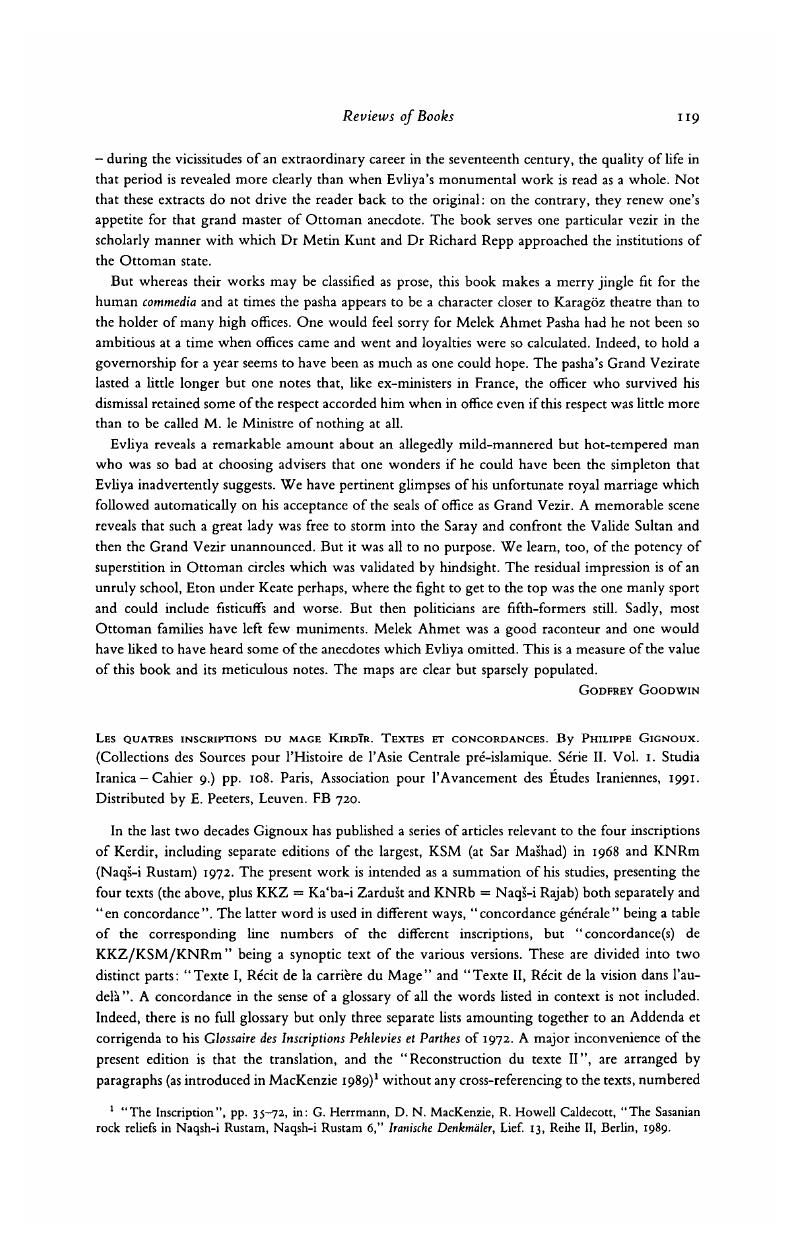No CrossRef data available.
Published online by Cambridge University Press: 24 September 2009

1“The Inscription”, pp. 35–72, in: Herrmann, G., MacKenzie, D.N., Caldecott, R. Howell, “The Sasanian rock reliefs in Naqsh-i Rustam, Naqsh-i Rustam 6,” Iranische Denkmäler, Lief. 13, Reihe II, Berlin, 1989.Google Scholar
2Henning, W.B., The Inscription of Sar-Mašhad (London 1955)Google Scholar also The Inscription of Naqš-i-Rustam (1957) Minor inscriptions of Kartīr together with the end of Naqš-i-Rustam (1963).
3In one case I must give him best, with the reading (using my conventions) KSM 27 Wdlwnd(yḥy ZKm 'L), instead of my c)['l](ky). This is perhaps a good point to correct some printing errors in my own edition: p. 39, above KNRm 3 [gyw]('k), add in KSM 2 gy]w(')[k; p. 46 pu, KSM 30, for '](B)[LW](N)[m read '](B)[LW](N)[n; p. 52, KSM 53, for ca. 90 read ca. 70.
4On the first page of the introduction I am further credited (if that is the right word) with a joke I may have made some twenty years ago, likening Kerdir to Rasputin: this is almost as disconcerting as being faced with an unknown ‘child’ one is said to have fathered decades earlier.
5As for example (p. 66, n. 121) the difference between the ideograms ḤWYTNn and (KSM 30) ḤWHn, both taken as hān.
6P. 95, § 24, out of nothing, a lacuna, he has Kerdir put himself into trance “sur l'ordre/ par la grâce de Šabuhr” — although this is dismissed in n. 213 as a politically inspired lie.